Video – “Welcome to Jurassic Park”
Some things that I noticed while watching this was that there was an L-cut and a J-cut.
Some things that I noticed while watching this was that there was an L-cut and a J-cut.
A student tries to complete school assignments but there is a time crunch, will he finish in time.
-I used a smash cut
-I used a montage
-I used a fade out
-I used cutting on action
Questions
I like this clip becasue it shows one huge brachiosaurus and then shows the character who is a palientologist who is shocked and amazed to see such an extinct creature back on its feet living again. They get up close to the brachiosaur and from the camera shot given it shows the 3 characters up close with only showing the bottom half of the dinosaur looking up at it. Then the camera shot changes looking upward showing the upper half to show how massive it is with the characters still in the frame. After that happens there is a wide shot showing the full brachiosaurus. Then towards the endo of the clip there is a view of a whole field of dinosaurs, and since we got up close to see the massiveness of the brachiosaurus we can have a good idea of how large all of the dinosaurs are in the field by a lake is. Which really really is what makes this clip from the movie so impactfull how it shows these details whithout us knowing it.
I learned from this weeks excersize that there is 7 rules to make a good film. Having emotion, story, rhythm, eye trace, 180 degree rule, continuity of space, and breathing space between scenes with alot of action or intense knowledge gained in a short period of time.
I watched a video on camera shots and angles by D4Darious. He explains and shows them very well.
https://www.youtube.com/watch?v=YhJArnjpWU8&feature=emb_logo
I decided to take down and disect each shot and write a description on how each shot works what it does. I did it with every shot to also have a log of what each shot can do so I can refer to something.
Extreme Wide Shot: Showing the suroundings and setting. This can have characters in it, or it can just give us a view of the landscape. This shot also allows people in the shot to appear small and the suroundings bigger, to have a scale of what is in the shot.
Wide Shot / Full Shot: A focus on the subject including the whole body or object with having plenty of space to see the enviornment around the focused point. This can be used to exagerate the smallness of a character.
Medium Full Shot / Cowboy Shot: This shot will include the knees up on a person.
Medium Shot: This shot will show the waist up to get good view of the surroundings and a closer view of the character(s) in the shot.
Medium Close-Up Shot / Bust Shot: This shot is taken about chest up, This has the same effect on as the medium shot but just gets a closer view of the actors face.
Close-Up Shot: This shot shows just the head and shoulders to see extreme detail on facial expressions.
Extreme Close-Up Shot: This shot will just show the head, or part of the face. This is a more exagerated close-up shot to exagerate more vibrant detail on the face.
Cut In / Insert Shots: This is used to focus on an object that is important in a scene.
Cut Away Shot: This is used to move away from the main focus of the shot to a whole different place/setting/location.
P.O.V. Shot: This is seeing from a characters point of view (P.O.V.)
Over the Shoulder Shot (O.T.S.): This shot is when you place the camera behind the actor with the shoulder and head in view (from the backside) looking forward.
2 Shot: This is having two people in the frame. You have each actor take up the same amount of space on camera. This is used in conversations. This is a type of shot that can be an close-up or far away.
Eye Level Shot: This shot is taken at eye level and has a neutral impact on what the viewer should think.
Low Angle Shot: This is where the camera is placed lower and looking upward the subject or character in the shot. This makes the character appeal more powerful.
Extreme Low Angle Shot: this is lower than the low angle shot to establish them to have supreme power.
High Angle Shot: This is when the camera is placed above the actor and looking downward. This exagerates how weak someone is or someone with less power.
Overhead Shot: This shot is taken directly above the actors head and looking downward.
Dutch Tilt Shot: This shot is used to confuse whoever is watching and to tell that there is something wrong in the scene that the director wants exagerated.
Pan Shot: This is moving the camera and focusing on the charactor while moving side to side.
Tilt Shot: This is when the camera moves upward from looking downward.
Hand Held Shot: When you hold the camera.
Steady Camera Shot: This is steady because you are using a steady camera.
Dolly Shot: This is when you move the camera forward or backward on a track or slider,
Zoom in Shot: This is when you zoom in and amplify what the main focused point is.
This is a short film I made to present in class and got feedback on what I did well and what needs to be improved on.
Some reedback I got back was on how I sped up a portion of the film and the different angles that I used. The camera angles was something good I got feeback on. Some things that I can improve on is making the plot of the film have more clarity.
I watched the film “Across the Universe” directed by Julie Taymore. It was a good movie overall. The soundtrack was good.
| Film Title |
PLACE YOUR RESPONSES IN THIS COLUMN (DELETE THIS MESSAGE BEFORE YOU WRITE) |
| Year | 2007 |
| Director |
Julie Taymor |
| Country |
U.S.A. |
| Genre | Romance/Comedy-Musical |
| If you could work on this film (change it), what would you change and why? | There was a huge 25min section that made zero sense what so ever. Where Jude was on the hippy bus and they were all drugged up. That went way too long. I would change it to be just the bus part maybe and shorten it. but then the whole hippy tent hting was just absolutely horrible. The blue people were wierd and the large dolls and puppets was just not necessary at all. Other than that part everything else was pretty good. |
Film information can be found at imdb.com
As you view films, consider how the cuts, camera angles, shots, and movement work to create particular meanings. Think about how they establish space, privilege certain characters, suggest relationships, and emphasize themes. In addition to shot distances, angles, editing, and camera movement, note details of the narrative, setting, characters, lighting, props, costume, tone, and sound.
Ask yourself the following questions:
| TOPIC | YOUR NOTES |
| 1. Who is the protagonist? | Jude |
| 2. Who is the antagonist? | His life |
| 3. What is the conflict? | Jude needs to find his path in life. |
| 4. What is the theme or central, unifying concept? (summarize in one or two words) | Life and struggle |
| 5. How is the story told (linear, non-linear, with flashbacks, flash-forwards, at regular intervals) | It is being told linear with Jude as the main focus. |
| 6. What “happens” in the plot (Brief description)? | Jude starts off in Liverpool and makes his way to America during the Civil Rights movement and Vietnam War. Jude has a passion for art and painting and drawing, but cannot seem to figure out if that’s what he actually wants to do. |
| 7. How does the film influence particular reactions on the part of viewers (sound, editing, characterization, camera movement, etc.)? Why does the film encourage such reactions? |
The film shows a journey of Jude’s life on how he spent a portion of it. When a song came up usually it was something impactful that happened. They put these songs in the film to make it more interesting to follow along to so it lesses the chances of being bored of watching it. |
| 8. Is the setting realistic or stylized? What atmosphere does the setting suggest? Do particular objects or settings serve symbolic functions? | This takes place in a realistic setting. I think it takes place in the 1960’s becasue of the hippie scenes. There was symbolism in this film, some I was able to pick up and understand, but there was some sybolism when I knew it was it. But I didn’t know exactly what it was representing. |
| 9. How are the characters costumed and made-up? What does their clothing or makeup reveal about their social standing, ethnicity, nationality, gender, or age? How do costume and makeup convey character? | The costume design is pretty casual, but part of this takes place back in the 1960’s and 70’s so that style of clothing with the bright colors was shown in the film. The way Jude is dressed is more scraggely and poor but has some classieness to him. Lucy is wealthy and has better looking clothes. |
| 10. How does the lighting design shape our perception of character, space, or mood? | It has us look at the subject that is the main focus. |
| 11. How do camera angles and camera movements shape our view of characters or spaces? What do you see cinematically? | By giving us new outlooks of how to look into the frames of a film. |
| 12. What is the music’s purpose in the film? How does it direct our attention within the image? How does it shape our interpretation of the image? What stands out about the music? | The musics purpose was the Beatles which has build up in the songs. When there is an important moment in the film a song plays so we can remember what happened. |
| 13. How might industrial, social, and economic factors have influenced the film? Describe how this film influences or connects to a culture? | The Beatles and past historical events. |
| 14. Give an example of what a film critic had to say about this film. Use credible sources and cite sources.Example: “The Shawshank Redemption Movie Review (1994) | Roger Ebert.” All Content. N.p., n.d. Web. 24 June 2015. | still looking. |
| 15. Select one scene no longer than 5 minutes that represents well the whole film and shows relevant cinematic elements. Write a one-sentence description of the scene and record the time of the scene.Example: from 1:05:00 to 1:10:00.
Explain why you chose this scene. |
PLACE THE TIME STAMP FROM THE SCENE HERE… Example: 00:00:00 – 00:05:00
1:55:00-2:00:00 This song represents the whole movie in a nutshell because Jude found his true love in the U.S.A. but got kicked out and then goes back. I chose this because Jude starts off in a bar and in the song it says this at the begining of it, “take a sad song and make it better”. I think this could be symbolizing Jude’s life, though he wasn’t rich he can still live a good life. |
| 16. In the selected scene: write a sentence for each of the elements below to justify why this scene best represents the film: | towards the end of the film the 5min spot is. |
| a. Screenwriting: | The actors feel depressed at the begining but then at the end the are happy. |
| b. Sound Design: | some taps on a glass, a car whooshes by, and some rhythmic taps on trash cans. |
| c. Camera Movements/Angles: | Steady anle movements but not much movement until towards the end of the 5min time slot I chose. |
| d. Light Setup: | Starts off in a dark gloomy bar setting then ends in a bright lite area. |
| e. Soundtrack/Score: | A version of the song “Hey Jude” plays. |
| 18. What’s the socio-cultural context of this film? | The context of the film is stating that you choose you how get to live it. Plus it shows that you can do whatever career path you want to take whenever you choose at any pojnt in time. Basically the point is just living your life and figuring out what exactly your ment to do for a living. |
This worksheet was developed with ideas from many IB Film teachers, thus should remain in the Creative Commons
Begining of film shows pieces of history in the waves at aprox.0:02:00. Jude goes back and finds his father aprox 0:13:40. song at 0:20:00 new girl finds out news on a paper. another song 0:28:00 at bowling. song at 0:32:00 someone dies. Lucy and Jude get to know eachother better at 047:10. Lucy begins to like Jude after her boyfriends death in the war. aprox 0:53:00 song that chenges Lucy’s brother to be drafted. aprox 1:00:00 the eggman song depicting on drugs til 1:15:00. 1:27:00 depicting The Vietnam war. after that Lucya nd Jude’s relationship goes south and ends up not working becasue he is jealous of something. 1:45:00 Jude’s dad helps him out of jail. after that cool depiction of people in hospital beds. 1:53:00 Jude is back working in the shipyard. The song “Hey Jude” plays several times throughout the film. Jude is abe to go back to the U.S.A. w=he was kicked out temporarily. Max finds his path, he was drafted and then became a taxi driver. aprox 2:00:00 song at the top of a building singing in front of people on the street.

“The most honest form of filmmaking is to make a film for yourself.”
― Peter Jackson, Link
I watched the episode 2 of the Story of Film and learned how to transform negative thoughts into not so bad thoughts. Plus I started the film production on sneakonthelot.
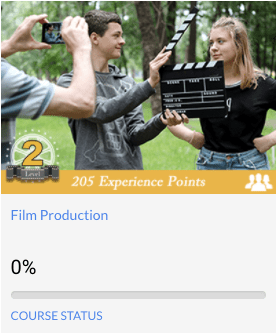
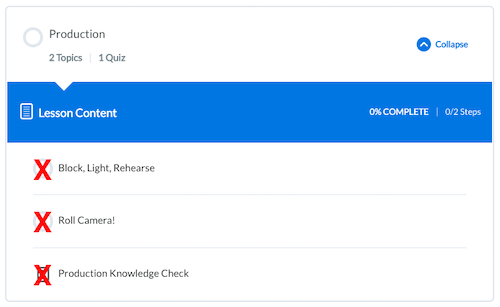

I watched the Story of Film episode 2.
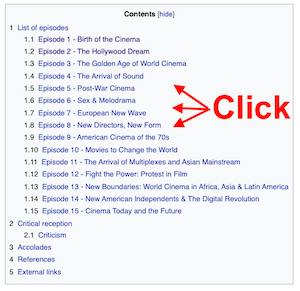
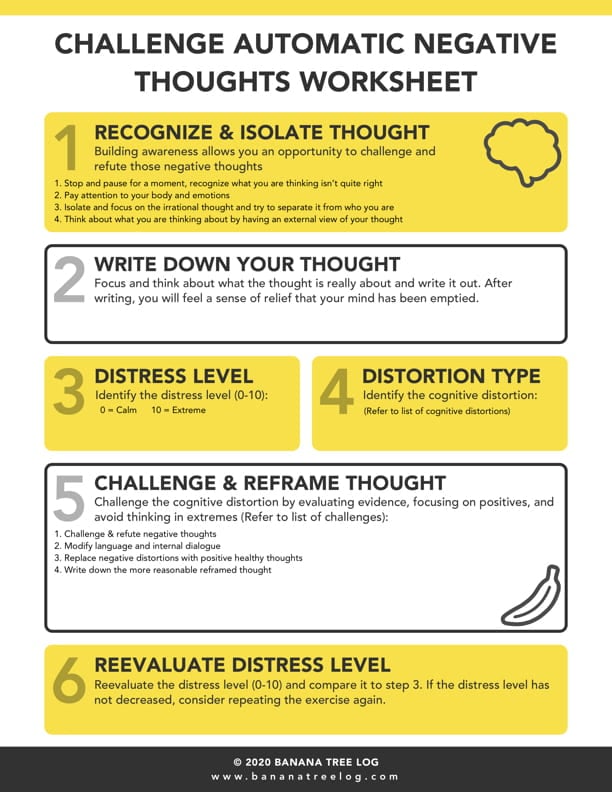
Most of the time my negative thoughts are related to school like in english class when I have to write an essay that is worth alot I freak out think not the best. so then I look at by doing a paragraph a day and its not so bad of a day.
I learned that Citizen Kane was one of the first films to have expierimented with light in a studio set setting.
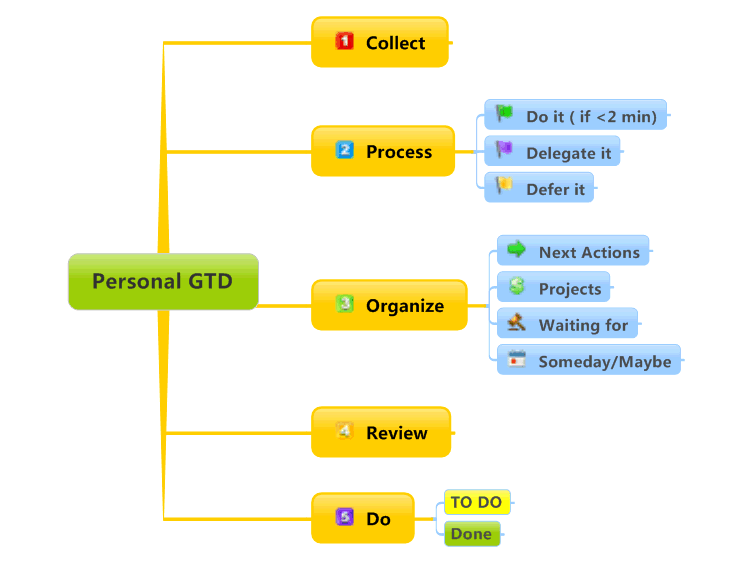
Teens are overwhelmed, partly because they don’t yet have the skills to manage the unprecedented amount of stuff that enters their brains each day. – from LifeHacker.com
“Your mind is for having ideas, not holding them.”
“You can do anything, but not everything.”
― David Allen, (GTD) Getting Things Done for Teens: Take Control of Your Life in a Distracting World
This is about how I made my working GTD system so than I can get thing done in a timely manor so then I don’t to remember every detail of what I have to do throughout the week.
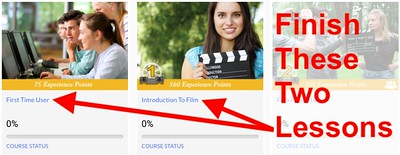
I have completed this. This is a cool program, I like it.



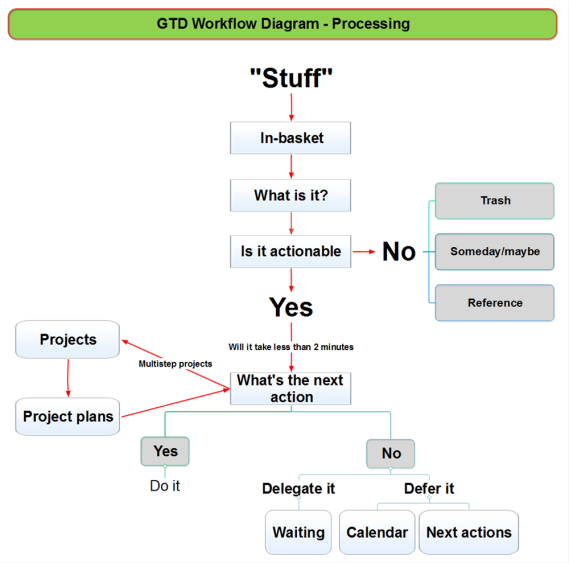

I will use paper and pen and make kind of like a small callender of the week and put what assignments are due when on each day. Then when I finish I will check it off the list. I’ll do the same for every week.
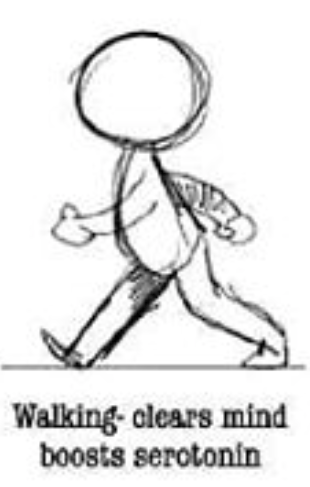
I think about so many things that writing it down takes so long.

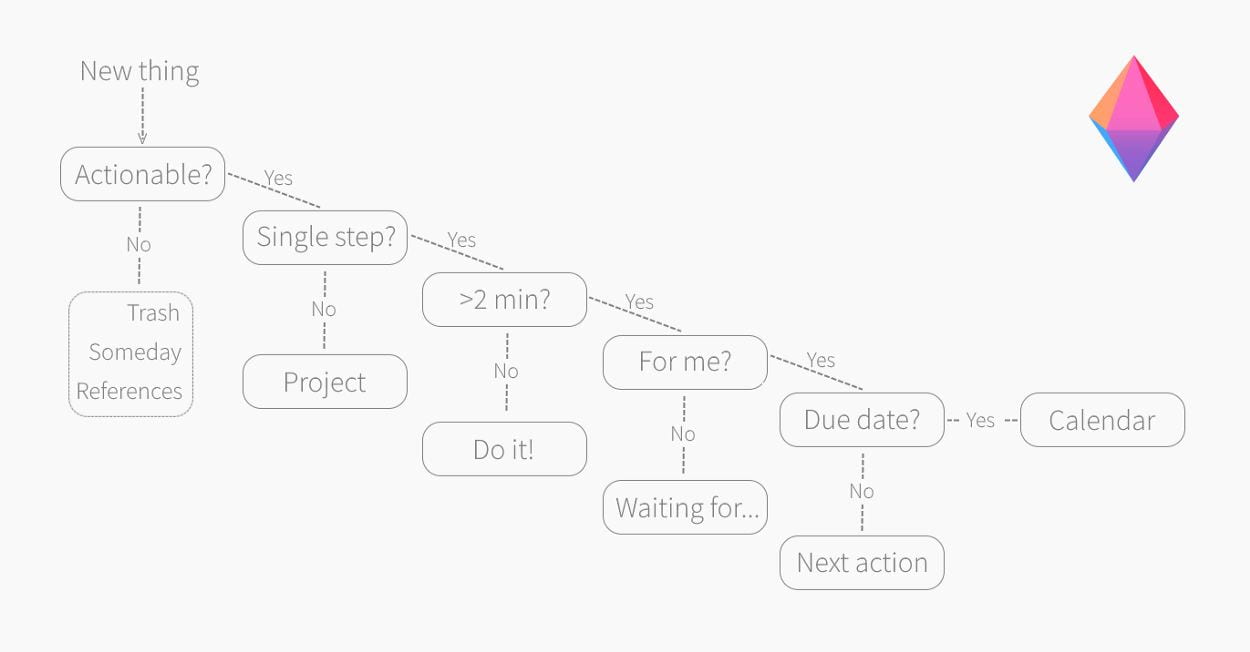
I did this awhile ago I think. But cannot find that pic of what I did. But I am writing down what needs to be done within each week and having a check box next to each task/assignment. Then when I am done I will check it off.
I learned that the more you write down what you need to get done the better it is for you. So you can have a map of what needs to be done and you don’t have to remember it all. I also learned how to use Sneakonthelot.
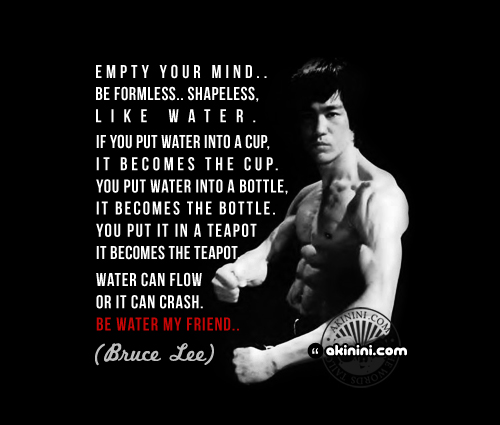
“‘Be shapeless and formless.. like water’ (Bruce Lee)” by Akinini.com is licensed under CC BY-NC-ND 2.0
“Have a mind like water.”
― David Allen, GTD
I watched the story of Cinema episode. I also worked on Sneakonthelot.

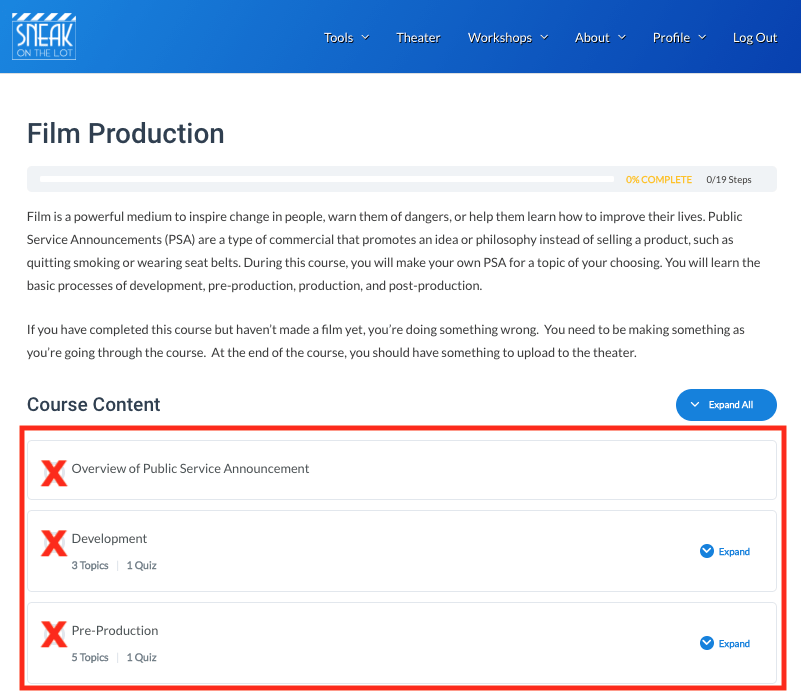
I got an idea of my PSA I will do and finish it on sneakonthelot. My idea is to bring the message of, don’t litter.



I personally haven’t thought of my happiness brain chamicals and how I should raise it. I already create a good level of endorphins because I play the cello regularly throughout the weak. I don’t regularly raise my seratonin levels though, which I need to increase for sure. I was getting alot of exersise in when the weather was nice out. My oxytocin levels are good though by socializing pretty regularly with texting and facetime plus other ways of getting human interaction in that part of raising those levels. But otherwise, my dopamine levels are pretty low and usually becasue the bad deficiantcy side of things. I procrastinate on alot of things like some school work and sometimes takes awhile to focus on certain topics. That is what my D.O.S.E. levels are usually like. Some I should increase and improve, but with some of them they are exactly where they need to be.
I learned that making a PSA can be very difficult and hard to make. I also learned that a PSA is essentially a very short film that isn’t trying to sell anything, but instead with the focus of giving a messege to its audience. I had some problems making my PSA with files and exporting, but that didn’t take to long to fix up.
I chose Indiana Jones: Raiders of the Lost Arc to analyze for the film analysis. I chose this film because Harrison Ford is in this movie and I wanted to look at it from different viewpoints
| Film Title |
Indiana Jones: Raiders of the Lost Ark |
| Year | 19 |
| Director |
Steven Spielberg |
| Country |
U.S.A. |
| Genre | Action and Adventure |
| If you could work on this film (change it), what would you change and why? | Other than adding in modern day special effects and video quality. This is a great film, the only thing that I would add into it is probably a scene where Indiana Jones talks about why he hated snakes. |
As you view films, consider how the cuts, camera angles, shots, and movement work to create particular meanings. Think about how they establish space, privilege certain characters, suggest relationships, and emphasize themes. In addition to shot distances, angles, editing, and camera movement, note details of the narrative, setting, characters, lighting, props, costume, tone, and sound.
Ask yourself the following questions:
| TOPIC | YOUR NOTES |
| 1. Who is the protagonist? | Indiana Jones |
| 2. Who is the antagonist? | 1981 |
| 3. What is the conflict? | The Nazi’s are in power |
| 4. What is the theme? (summarize in one or two words)Learn more… | Saving history and stopping criminals. |
| 5. How is the story told (linear, with flashbacks, flash-forwards, at regular intervals)Learn more… | The story is told linear because it jumps between what Jonesis doing and what the Nazi’s are doing. The film spends most of the time on Jones’s timeline in the film. |
| 6. What “happens” in the plot (Brief description)? | Indiana Jones is on a mission to find the Arc of the Covenent before the Nazi’s discover it. |
| 7. How does the film influence particular reactions on the part of viewers (sound, editing, characterization, camera movement, etc.)? Why does the film encourage such reactions? |
the camera movement was really good. there was alot of shot of the main characters moving through crowds and walking inbetween people. This gives us that anticapation for what is gonna happen next when he is on the other side of the crowd.
Why does the film encourage such This happens because this has the audience who is watching to be on edge fo what is gonnna happen. |
| 8. Is the setting realistic or stylized? What atmosphere does the setting suggest? Do particular objects or settings serve symbolic functions?Learn more… |
The setting is realistic, it takes place in Cairo. This is to resemble a time during WW2 when Hitler and the Nazi’s were searching for historical artifacts. |
| 9. How are the characters costumed and made-up? What does their clothing or makeup reveal about their social standing, ethnicity, nationality, gender, or age? How do costume and makeup convey character?Learn more… | Most caracters in the film are spposed to be middle class and poor. |
| 10. How does the lighting design shape our perception of character, space, or mood?Learn more… | The lighting around Jones is well lit most of the time in the film. He is the protagonist in this film and is looked upon very well. It is a good mood when Jones is on in the film |
| 11. How do camera angles and camera movements shape our view of characters or spaces? What do you see cinematically?Learn more… | 1:06 |
| 12. What is the music’s purpose in the film? How does it direct our attention within the image? How does it shape our interpretation of the image? What stands out about the music?Learn more… | The slower parts of the music are used in the film during transitions and when there is moving parts happening on screen. The music tends to move alon with it by going up and down the music scale at a faster rate. In this particular film the Indiana Jones theme is very iconic and when you hear it. You anticipate some action with Jones doing something heroic and brave. |
| 13. How might industrial, social, and economic factors have influenced the film? Describe how this film influences or connects to a culture?Learn more… | In this movie it connects to times during WW2, when the Nazi’s were out stealing and ccollecting old artifacts from history. This shows that Jones is protecting these artifacts and treasures from falling into the wrong hands. |
| 14. Give an example of what a film critic had to say about this film.Use credible sources and cite sources
Example: “The Shawshank Redemption Movie Review (1994) | Roger Ebert.” All Find good sources… |
I’ll get to this soon |
| 15. Select one scene no longer than 5 minutes that represents well the whole film and shows relevant cinematic elements. Explain why. | PLACE THE TIME STAMP FROM THE SCENE HERE… Example: 00:00:00 – 00:05:001:21:25-1:25:40
This clip represents what this film is about and uses several cinematic elements. |
| 16. In the selected scene: write a sentence for each of the elements below: | |
| a. Screenwriting: | There wasn’t much dialogue in this scene but there was talking between characters at the begining of this 5min segment. In the screenwriten part for this film there must have been notes that told them to be tired, exausted, and energetic, and suprised. |
| b. Sound Design: | there were sounds of gun shots and moving machinery. |
| c. Camera Movements: | They were medium shots in this and a tracking shot. |
| d. Light Setup: | This was filmed in daylight and lighting was definitly used on indoor shots. |
| e. Soundtrack: | The soundtrack is great, John Williams is amazing and brings sensation and suprise into his music which keeps you watching. Plus the adventurous tunes he brings out in this film of Indiana Jones: Raiders of the Lost Arc. |
| 18. What’s the socio-cultural context of this film?Learn more… | This takes place in several places one of them is in Cairo, Egypt and Indiana adapts to their culture of what they wear to blend in so the villans don’t find him. |